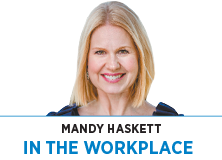Subscriber Benefit
As a subscriber you can listen to articles at work, in the car, or while you work out. Subscribe Now The Great Resignation has ignited an arms race among assessment tools. There are more than 3,000 assessments on the market today in an industry predicted to reach $10.7 billion by 2026. Each one promises to reveal a function of personality—learning styles, selling styles, management styles and more.
The Great Resignation has ignited an arms race among assessment tools. There are more than 3,000 assessments on the market today in an industry predicted to reach $10.7 billion by 2026. Each one promises to reveal a function of personality—learning styles, selling styles, management styles and more.
If you’re like me, you can already go to a party and declare, “I’m a High A, Low C; High Quick-Start; Enneagram 3; Type A; ENFJ; Highest I; with Strengths in Connectedness, Individualization, Ideation and Intellection!” I can even tell you what kind of cheese Buzzfeed says I am: gouda.
I’ve gained tremendous self-awareness from good tools. But assessments are not all created equal. And they are definitely not all created for use in the workplace. With so many choices, curating the one(s) right for your business hinges on understanding the problem you’re trying to solve. One problem trending right now is hiring.
Pre-hire assessments that reduce bias, improve job fit and are legal to use with candidates are especially popular now given the widespread migration of workers. To ensure you’re complying with EEOC guidelines, and gaining valuable predictive insight, consider these important steps.
Begin by evaluating the data you’re collecting from candidates in the hiring process. Make sure your pre-hire data falls into these three buckets:
◗ head—the behavioral and cognitive hardwiring of a human, which is stable over time.
◗ heart—the values of the individual, and his or her behavioral experience living those values.
◗ briefcase—knowledge, skills and abilities, which are dynamic over time and usually land on a resume.
Imagine you have a candidate standing on the other side of a brick wall. With each bit of head, heart and briefcase data you collect, you get to remove one brick in that wall, allowing you to shed more light on your candidate and see the person more clearly. You gain valuable predictive visibility with the right data.
The amount of predictability (staying with the analogy: the amount of bricks you remove from the wall) varies dramatically. Briefcase data, for example, is only 6% predictive of job performance. In the heart category, integrity tests can help reveal values, and those are about 21% predictive of job performance. But the strongest predictor of job performance pre-hire is data related to the head: Behavioral and cognitive hardwiring (when combined with a structured interview process) amount to 59% predictability in job performance. That’s a big jump.
If you’re interviewing candidates with a resume and references only, you’re chiseling away at the brick wall with a spoon in an attempt to learn about your candidate’s potential. But adding in the right behavioral and cognitive assessments pre-hire allows you to take down that wall of unknown with a jackhammer.
For optimal predictability, look for an assessment tool with these three critical qualities:
Scientific validity. This refers to how well a scientific test actually measures what it sets out to, or how well it reflects the reality it claims to represent. When using any assessment tool at work, validity is critical because it determines the degree to which a resulting score can be used to make meaningful and useful inferences about the candidate.
Job-relatedness: Jobs have personalities just like people do. Tools like predictive index require the creation of a behavioral and cognitive job benchmark alongside a human benchmark to predict person-job correlation. Without a job benchmark, any personality assessment data you have is merely interesting. It becomes predictive only when objective benchmarks reveal the relatedness between a person and a job. To avoid getting sued by your candidates, make sure any people data is correlated to the job they’ll be doing.
Early and accessible: To help remove inevitable human bias, gather behavioral and/or cognitive data the moment candidates apply. Having this data early will allow your tool to curate a pool of candidates based on high job-related match for your first round of screening, helping hiring managers avoid the trap of selecting what’s familiar.
If your future boss asks you to take a pre-hire assessment that uncovers your childhood wound or your cheese type, be sure to ask how that insight is job-related. If one of your peers reaches for an armchair philosophy tool that assigns you a “type” (like Meyers-Briggs), make sure it’s scientifically valid. Without validity, you won’t be able to predict any outcomes that matter. You wouldn’t use a heart monitor to measure the temperature of your steak, would you?
The more savvy you are about curating assessments that solve the right problems the right ways, the more likely you are to win the long-term talent game.•
__________
Haskett is a leadership consultant at Advisa, a Carmel-based leadership consultancy.
Please enable JavaScript to view this content.
